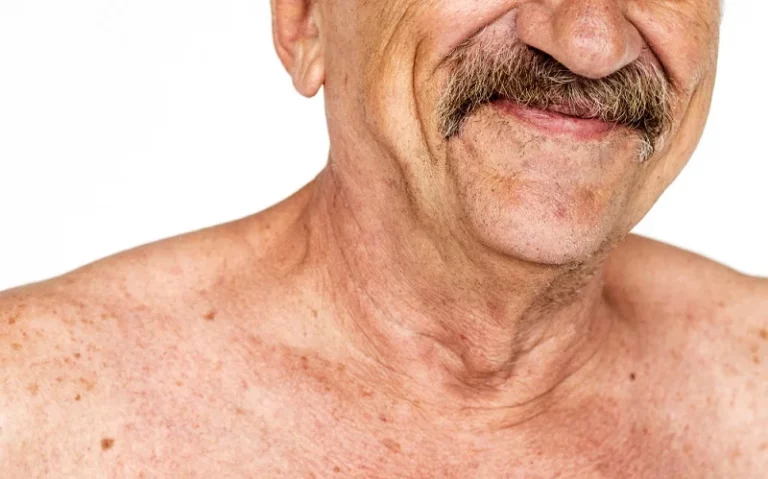Remove Age Spots Using Cryotherapy 2023
Have you ever wondered how to effectively get rid of age spots without invasive procedures? Cryotherapy might just be the solution you’ve been searching for.
Cryotherapy is a popular treatment option for age spots, utilizing freezing technology to remove these unwanted blemishes. Unlike other methods such as laser therapy, cryotherapy offers a non-invasive and efficient approach to address age spots.
During the procedure, liquid nitrogen or another freezing agent is applied directly to the affected area. The extremely cold temperature destroys the pigmented skin cells responsible for the appearance of age spots. While temporary redness may occur after treatment, it usually subsides quickly.
Cryotherapy’s effectiveness in lightening age spots makes it an ideal choice for those seeking a safe and convenient solution. If you’re looking for a hassle-free way to diminish the appearance of age spots, cryotherapy could be your indication towards achieving smoother and more even-toned skin.
Understanding Age Spots and Sun Protection
Age spots, also known as liver spots, are a common skin concern that many people experience as they age. These dark patches typically appear on areas of the body that have been exposed to the sun over time, such as the face, hands, and shoulders. While age spots are harmless and do not require medical treatment, they can be unsightly and affect one’s self-confidence.
The primary cause of age spots is prolonged sun exposure. When our skin is exposed to the sun’s harmful ultraviolet (UV) rays, it triggers an increase in melanin production. Melanin is responsible for giving our skin its color and acts as a natural defense mechanism against UV radiation. However, excessive sun exposure can lead to an uneven distribution of melanin, resulting in the formation of age spots.
Protecting your skin from the sun is crucial in preventing age spots from developing or worsening. Here are some effective measures you can take:
- Sunscreen: Applying sunscreen with a high SPF (sun protection factor) before going outside can significantly reduce the risk of age spots. Look for broad-spectrum sunscreens that protect against both UVA and UVB rays.
- Protective Clothing: Wearing protective clothing such as long-sleeved shirts, wide-brimmed hats, and sunglasses can shield your skin from direct sunlight. Opt for lightweight fabrics with built-in UPF (ultraviolet protection factor) for added defense.
- Seek Shade: Limiting your time in direct sunlight during peak hours (usually between 10 a.m. and 4 p.m.) can minimize exposure to harmful UV rays.
In addition to these preventive measures, it’s important to understand that age spots may take time to fade even with proper protection. Patience is key when dealing with this cosmetic concern.
While cryotherapy has gained popularity for various skincare treatments, its effectiveness specifically for age spot removal is still under debate. Cryotherapy involves freezing the targeted area using liquid nitrogen or another freezing agent to destroy the pigmented cells. However, this method may not be suitable for everyone and can carry potential risks such as skin irritation or discoloration.
If you’re considering cryotherapy for age spots, it’s essential to consult a dermatologist who can evaluate your specific condition and recommend the most appropriate treatment option. They may suggest alternative treatments like laser therapy, chemical peels, or topical creams that have shown promising results in reducing the appearance of age spots.
Diagnosis of Age Spots and Treatment Options
Age spots, also known as liver spots, are a common skin condition that often develops as we age. These dark patches typically appear on areas of the skin that have been exposed to the sun over time. While age spots are generally harmless, many individuals seek treatment options for their removal due to cosmetic concerns. Dermatologists play a crucial role in diagnosing age spots and recommending appropriate treatments.
Diagnosing Age Spots
Dermatologists can easily diagnose age spots through visual examination. By closely inspecting the affected area, they can determine whether the pigmented lesions are indeed age spots or if further investigation is necessary. In some cases, dermatologists may perform a skin biopsy to rule out any potential signs of skin cancer. However, most age spots can be identified without the need for invasive procedures.
Treatment Options for Age Spot Removal
Once diagnosed, individuals have several treatment options available to remove or reduce the appearance of age spots. These treatments aim to lighten or eliminate the pigmented areas, providing a more even complexion. While various methods exist, cryosurgery has emerged as one of the most common and effective treatments recommended by dermatologists.
Cryosurgery involves freezing the targeted area with liquid nitrogen or another freezing agent. The extremely cold temperature destroys the excess melanin responsible for creating the dark pigment in age spots. This procedure is relatively quick and straightforward, typically requiring only one session to achieve desired results.
In addition to cryosurgery, other treatment options include:
- Topical Creams: Over-the-counter creams containing ingredients like hydroquinone or retinol can help fade age spots gradually.
- Chemical Peels: Dermatologists can apply chemical solutions to exfoliate the top layer of skin and diminish pigmentation.
- Laser Therapy: Laser technology targets melanin in age spots, effectively breaking down excessive pigment.
- Microdermabrasion: This procedure involves gently exfoliating the skin’s surface to remove dead cells and lighten age spots.
It is important to note that while these treatments can significantly improve the appearance of age spots, they do not address the underlying cause. To prevent new age spots from forming, it is crucial to protect your skin from sun exposure by wearing sunscreen and protective clothing.
Benefits of Cryosurgery for Age Spots
Cryosurgery, a popular treatment for age spots, offers several benefits that make it an attractive option for those looking to get rid of these unwanted skin blemishes. This minimally invasive procedure effectively destroys excess melanin responsible for age spots, requires minimal downtime compared to other treatment methods, and even helps stimulate collagen production through the freezing process.
1. Effective Destruction of Excess Melanin
Age spots, also known as liver spots or solar lentigines, are caused by an overproduction of melanin in specific areas of the skin. Cryosurgery targets these dark-pigmented cells by freezing them at extremely cold temperatures. The low temperature destroys the excess melanin without causing harm to the surrounding healthy tissue. By effectively eliminating the source of discoloration, cryosurgery provides noticeable results in reducing the appearance of age spots.
2. Minimal Downtime
One significant advantage of cryosurgery is its minimal downtime compared to other treatment methods such as laser therapy or chemical peels. After undergoing cryosurgery, patients can resume their regular activities almost immediately. While some redness and swelling may occur initially, these side effects typically subside within a few days. Unlike more invasive procedures that require extended recovery periods, cryosurgery allows individuals to quickly return to their daily routines.
3. Stimulation of Collagen Production
In addition to removing age spots, cryosurgery offers an additional benefit by stimulating collagen production in the treated area. Collagen is a protein that provides structure and elasticity to the skin. As we age, collagen production naturally decreases, leading to sagging and wrinkles. The freezing process involved in cryosurgery triggers a natural healing response in the body, prompting increased collagen production at the site of treatment. This can result in improved skin texture and firmness over time.
By opting for cryosurgery as a treatment for age spots, individuals can enjoy the benefits of effective melanin destruction, minimal downtime, and collagen stimulation. This procedure offers a convenient solution for those seeking to improve the appearance of their skin without undergoing more invasive treatments.
Dermatologists’ Role in Treatment Selection
Dermatologists play a crucial role in determining the best treatment option for each patient’s unique needs. With their expertise in dermatology, these specialized doctors are well-equipped to evaluate various factors and recommend the most suitable course of action. Dermatologists carefully consider factors such as skin type, medical history, and desired results before making a recommendation.
One of the treatment options that dermatologists may suggest for age spots is cryotherapy. This therapy involves freezing the targeted area using liquid nitrogen or other cooling agents to destroy the hyperpigmented cells on the epidermis. However, it is important to note that cryotherapy may not be suitable for everyone and should only be performed by a trained professional.
Before proceeding with cryotherapy or any other procedure, dermatologists thoroughly assess their patients’ skin type. Different skin types react differently to treatments, so understanding this aspect helps them determine if cryotherapy is an appropriate choice. For instance, individuals with darker skin tones may be more prone to post-inflammatory hyperpigmentation after cryotherapy. In such cases, alternative treatments like topical medications or laser therapy might be recommended instead.
Another consideration made by dermatologists is the patient’s medical history. Certain underlying conditions or medications can affect how our bodies respond to treatments. For example, individuals with diabetes or autoimmune disorders may have compromised healing capabilities and thus require additional precautions during cryotherapy sessions. By taking these factors into account, dermatologists ensure safe and effective treatment outcomes.
Moreover, dermatologists listen attentively to their patient’s goals and expectations from the procedure. Some individuals might prioritize quick results while others prefer gradual improvement over time. Understanding these preferences allows dermatologists to tailor their recommendations accordingly.
In addition to providing guidance on treatment selection, dermatologists also play a vital role in educating patients about the procedure itself. They explain what cryotherapy entails, including any potential side effects or discomfort that may arise. By addressing any concerns or questions, dermatologists help patients feel more informed and confident in their decisions.
To conclude, dermatologists are essential in the process of selecting appropriate treatments for age spots. Through careful evaluation of factors such as skin type, medical history, and desired results, they ensure that each patient receives personalized care. Whether recommending cryotherapy or exploring alternative options like topical medications or laser therapy, dermatologists’ expertise ensures safe and effective treatment outcomes.
Exploring Various Options for Age Spot Treatment
Age spots, also known as dark spots, are a common concern for many individuals. Fortunately, there are several treatment options available to help diminish the appearance of these unwanted blemishes. In addition to cryotherapy, two other popular treatments include laser therapy and chemical peels. Each option has its own advantages and considerations based on individual circumstances. Consulting with a dermatologist is crucial in determining the most suitable choice for your specific needs.
Laser Treatments: A Precision Approach
Laser treatments have gained popularity in recent years due to their precision and effectiveness in targeting age spots. This non-invasive procedure utilizes focused beams of light to break down the melanin pigment responsible for the discoloration of the skin’s surface. By doing so, it encourages the growth of new skin cells, resulting in a more even complexion.
There are different types of lasers used for age spot treatment, including:
- Q-switched lasers: These lasers emit short bursts of energy that specifically target melanin without damaging surrounding tissue.
- Fractional lasers: This type of laser treats only a fraction of the skin’s surface at a time, allowing for faster healing and minimizing downtime.
While laser treatments offer promising results, they may not be suitable for everyone. Individuals with darker skin tones or certain medical conditions may require alternative options to avoid complications such as hyperpigmentation or redness.
Chemical Peels: Renewing Skin from Within
Chemical peels involve applying a chemical solution to the skin’s surface, which causes controlled damage and subsequent exfoliation. The damaged outer layer peels off over time, revealing fresher and more youthful-looking skin underneath.
Different strengths of chemical peels can be used depending on the severity of age spots:
- Superficial peels: These mild peels typically utilize alpha-hydroxy acids (AHAs) or beta-hydroxy acids (BHAs) to gently exfoliate the skin’s surface. They are suitable for mild age spots and require little to no downtime.
- Medium peels: With a stronger chemical solution, medium peels penetrate deeper into the skin layers, targeting more significant discoloration. Recovery time may be longer compared to superficial peels.
- Deep peels: Reserved for severe cases, deep peels involve a potent chemical solution that reaches the deeper layers of the skin. This aggressive treatment requires substantial downtime and careful aftercare.
It is important to note that chemical peels can cause temporary redness, flaking, and sensitivity to sunlight. Sun protection is crucial during the healing process to prevent further damage.
Cryotherapy: Freezing Age Spots Away
Cryotherapy involves freezing age spots with liquid nitrogen, causing them to blister and eventually fall off. This quick and relatively painless procedure is commonly used for small individual spots or in combination with other treatments.
While cryotherapy can effectively remove age spots, it may not be suitable for everyone due to certain considerations:
- Individuals with darker skin tones may experience hypopigmentation (lightening of the treated area).
- The procedure can cause temporary redness or swelling.
- Multiple sessions may be required for optimal results.
Effectiveness of Cryotherapy for Age Spots
Cryotherapy has emerged as a highly effective treatment option for age spots, yielding impressive success rates. This innovative technique involves the use of extreme cold temperatures to freeze and eliminate pigmented cells responsible for these unsightly blemishes. The process selectively targets the affected areas while leaving surrounding healthy tissue unharmed.
One of the key advantages of cryotherapy is its ability to precisely destroy pigmented cells without damaging the neighboring skin. By subjecting age spots to freezing temperatures, the targeted cells are effectively destroyed, leading to their gradual disappearance over time. This focused approach ensures minimal scarring or discoloration, resulting in a smoother and more even complexion.
The effectiveness of cryotherapy can vary depending on the severity of age spots. While some individuals may witness significant improvement after just one session, others with deeper or more stubborn spots may require multiple treatments for optimal results. It is essential to consult with a dermatologist who can assess your specific case and recommend an appropriate treatment plan.
During each cryotherapy session, liquid nitrogen or another cryogenic agent is applied directly to the age spots using a specialized device. The extreme cold causes the pigment-producing cells to freeze and eventually die off. Over several weeks following treatment, these damaged cells naturally slough off, revealing healthier skin underneath.
While cryotherapy offers promising outcomes for many individuals seeking relief from age spots, it is important to note that this procedure may not be suitable for everyone. Individuals with certain medical conditions such as diabetes or compromised immune systems may need to explore alternative options or exercise caution when considering cryotherapy.
Moreover, it is crucial to understand that cryotherapy may cause temporary side effects such as redness, swelling, blistering, or darkening of the treated area. These reactions typically subside within a few days or weeks but should be discussed with your dermatologist beforehand.
The Advantages of Cryotherapy
In conclusion, cryotherapy is a highly effective treatment option for age spots. Freezing the pigmented cells helps to gradually fade the spots and restore a more even skin tone. This non-invasive procedure offers several advantages over other treatment methods. Firstly, cryotherapy is quick and relatively painless, making it a convenient choice for those with busy schedules. It requires minimal downtime, allowing you to resume your daily activities almost immediately. Furthermore, cryotherapy can be tailored to your specific needs, as dermatologists can adjust the intensity and duration of the treatment based on the severity of your age spots.
If you’re tired of feeling self-conscious about your age spots and longing for clearer skin, consider giving cryotherapy a try. Consult with a reputable dermatologist who specializes in this procedure to discuss whether it’s suitable for you. Remember to prioritize sun protection measures after your treatment to prevent new age spots from forming. With its numerous benefits and proven effectiveness, cryotherapy could be the solution you’ve been searching for.
FAQs
Can cryotherapy completely remove age spots?
While cryotherapy can significantly lighten or even completely remove age spots in some cases, results may vary depending on various factors such as the size and depth of the pigmentation. It’s important to have realistic expectations and understand that multiple sessions might be required for optimal results.
Can cryotherapy be used on other skin concerns besides age spots?
Yes, cryotherapy can also be used to treat various other skin conditions such as warts, skin tags, and certain types of precancerous lesions. Consult with your dermatologist to determine if cryotherapy is suitable for your specific concern.






